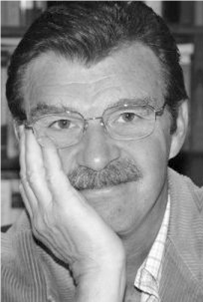


|
Interpreting the Bible
In 1887 D. S. Warner and his evangelistic company traveled throughout the Midwest calling on the saved to submit to sanctification, come out of denominational confusion and enter the "mighty reformation" rolling across the land. They arrived in Missouri at the invitation of saints whose interest in the Church of God movement had been awakened through the preaching of Jeremiah and Mary Cole. The Warner company held meetings in St. James, laying the foundations of a strong work. They opened a second series of meetings in Carthage, where another good work was begun. Under the influence of the Coles and Warner, Algernon B. Stanberry was converted at Carthage and called into evangelistic work. Several young people of that district later came under the influence of Stanberry’s preaching and followed him into the ministry. Among those young people was D. Otis Teasley.
D. O. Teasley was born in 1875 and entered the ministry in 1896. Writing about him years later, Charles E. Brown described Teasley as "a man of extraordinary natural abilities." (1) He quickly rose to prominent positions of responsibility. In 1904 Teasley and his wife, Ora, also a minister, moved to New York, where he took up responsibility for the missionary home there, moving it to several different locations before securing the site on Grand Avenue that it occupied for several decades. In 1910 the Teasleys moved to Anderson, where he took the assignment of general manager of the Gospel Trumpet Company, a post he held until his resignation in 1917.
Teasley was one of the movement's more advanced thinkers during the decades of his ministry. He sided with people like H.M. Riggle, A. T. Rowe, J. Grant Anderson, and other in the necktie controversy; there were the ministers who believed that wearing a necktie did not violate the standards of holiness. In addition to entering into controversy, Teasley also wrote several important books, among them The Holy Spirit and Other Spirits (1904), How to Conduct a Sunday School (1911), Historical Geography of the Bible (original work done in 1898, enlarged and republished in 1917), The Gospel Guide-book (1918), and The Bible and How to Interpret It (1918). This list of titles suggests that Teasley believed very strongly in the church's educational ministry. Indeed, many of his books were directed at educating ministers and gospel workers in order to increase their effectiveness. Along with his ministerial friends and colleagues, George Tasker and A. D. Khan, Teasley developed and wrote a correspondence course for ministers, available through a Bible institute founded by the New York missionary home.
Teasley had some very interesting ideas about the interpretation of the Bible. These views centered in his conviction that biblical interpretation is a three-way conversation between the text of scripture, the individual reader, and the church. He believed very strongly that "so-called 'private interpretation' was practically impossible and actually dangerous to both individual believer and the community of faith. Teasley said that both Catholics and Protestants erred in their views of the relation between individual reader and the church. The former insisted that the church should determine the meaning of Scripture for individuals. The latter took the opposite point of view" (2); individual readers determine the meaning of Scripture on their own. Better, said Teasley, when individual and church read Scripture in a balanced relationship, "The church is not given the supreme right to interpret the Bible for the individual, nor is the individual given the right regardless of unity and peace to interpret the Bible contrary to the general belief of the true church and force his interpretation upon others." (3)
Teasley's views on the subject of biblical interpretation bring us to the topic of Sunday school. The Sunday school curriculum is the voice of the church - or someone else - that stands in the role of the community which Teasley said must balance individual, private interpretation of the Bible. Sunday school, and the curriculum that structures it, thus carries a crucial responsibility in the interpretation of the Bible. The Sunday school curriculum cannot replace the Bible, nor do its writers intend that. Rather, the curriculum is an aid to the study of the Bible. This aid is a crucial voice for the church that, along with the reader and bible, is the altogether critical work of interpretation. Out of this conversation we determine meaning, and out of meaning comes learning, growth, and, ultimately, the formation of Christian disciples.
D. O. Teasley's convictions underscore the importance of the church in the process of biblical interpretation. A principle vehicle through which the church enters that process is its educational ministry. While it is certainly the case that educational ministry encompasses nearly all of the church's work, nevertheless the Sunday school is the crucial element in Christian education. If, then, we are to be a people who live by the Bible, the Sunday school and its curriculum must receive our constant and careful attention and development.
Merle Strege is historian for the Church of God.
NOTES
1. When the Trumpet Sounded (Anderson, Ind.: Warner Press, 1951), 223.
2. See my essay, "The Bible, the Church, and Christian Education" in Tell Me Another Tale: Further Reflections on the Church of God (Anderson, Ind: Warner Press, 1993), 165.
3. D. O. Teasley, The Bible and How to Interpret It, (Anderson: Gospel Trumpet Company, 1918), 53.
[Taken from the Vital Christianity magazine, September 1995, pp.26-7. Used by permission, Warner Press, Church of God Ministries, Anderson, IN.]
|